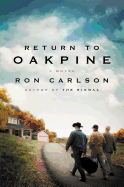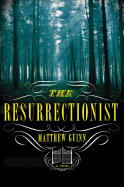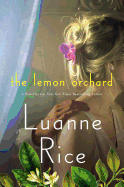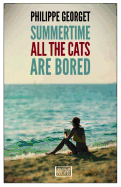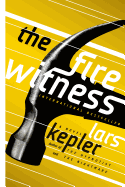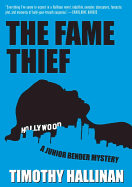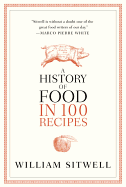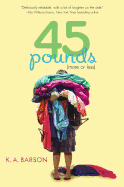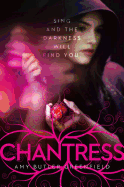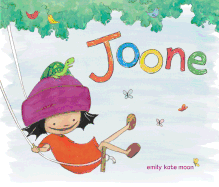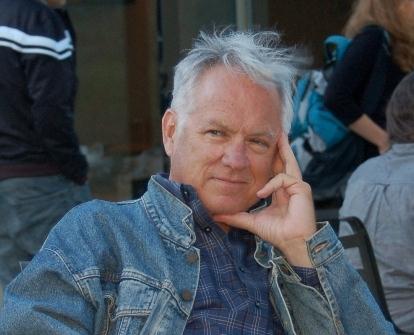 |
| photo: Tracy Hall |
It's no accident that Ron Carlson has emerged as a master craftsman of American fiction: he's been working at it for almost 40 years. Since his first short stories appeared in 1974 Carlson has published five story collections, six novels, a book of poetry and a popular craft primer, Ron Carlson Writes a Story. He's also been a writing teacher: at the Hotchkiss School in Connecticut, at the University of Arizona and now as director of the MFA Program in Fiction at the University of California at Irvine. In his most recent novel, Return to Oakpine (see our review below), a group of former high school bandmates reunite in their Wyoming hometown and cope with misfortune by rediscovering the sustaining power of their glory day pursuits. Here Carlson reveals how he came to write Return to Oakpine, the trend-breaking setting of the story he's writing now and, in an exclusive Shelf Awareness scoop, the awe-inspiring number that graced the author's West High Panthers football jersey.
When you start writing something new, at what point do you know whether it's going to be a short story or a novel? Do you prefer one form over the other?
I know right away. The notion for a story will appear, and I watch it for a few weeks and then go in and see what it will be. With a novel, I gear up for a longer period, and when I commence, I adjust my stride for the marathon. I favor both forms, the story for the wonder of the surprises that unfold, and the novel for the world you get to work for months. I'm writing stories now.
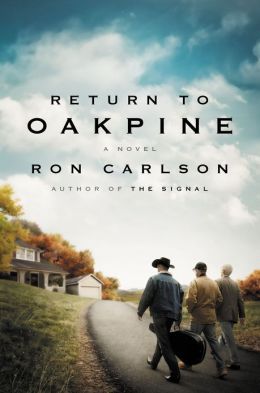 Which character came to you first when you began writing Return to Oakpine? Did your conception of that character change in the course of writing the novel?
Which character came to you first when you began writing Return to Oakpine? Did your conception of that character change in the course of writing the novel?
I thought of Craig Ralston fixing up Mrs. Brand's garage, and I started with a few small moments with him at work--sanding and laying tile--and I learned that he loved construction, but I saw then that it was going to be an ensemble book and that everybody was going to get part of the stage.
Who was your favorite character when the novel was finished?
I think if I had to answer right now, it might be Mason, because he's growing more grounded--or Jimm--but if you asked me tomorrow, it might be Wendy or Larry.
There is a satisfying symbiosis between the characters and the Wyoming landscape in Return to Oakpine. Was it a challenge to conjure the weather and terrain of Oakpine Mountain from sea level at Huntington Beach?
My head is full of mountains and the wind that approaches them. And I'm actually in them two or three times a year. I spent the first day of spring this year with my son and my brother digging two cars out of the snow in the Uinta Mountains of Utah. I'm finally just now (after seven years) writing a story set in this sweet old beach town.
Are the writing lessons Jimmy Brand gives to Wendy Ingram in Return to Oakpine similar to ones you use in teaching your MFA students? Did you have any reservations about including a writer as a main character?
You'd always worry about having a writer in the story. You'd make that person a painter--they have all that terrific equipment. But here he was a writer, and I listened to him; his notes are not my notes, but I might use some of them sometime. I wanted, if possible, a light touch, and I was careful with those scenes. He believes in being prolific, and I like that.
Larry Ralston's night running scenes in Return to Oakpine mimic the effortlessness of a born runner. Are you--like Haruki Murakami, Joyce Carol Oates and Don DeLillo--a writer-runner? If so, do you think about your work-in-progress while you run or...?
My knees are still good, but I run less and less. I have a magnificent old bicycle, and this town is made for it, miles of boardwalk, so I cruise around some every afternoon. Key is to ride into that late afternoon breeze, which sometimes can seem imperceptible, and ride home with it at your back, a little bonus. And yes: think.
Return to Oakpine celebrates the enduring power of high school friendships and hometown ties. Why do you think they remain so powerful?
I would love to know. So many of those people are our first people; we're trying on a life when we meet them and they see us as we go through some of the changes. We used to say at West High: wait until we get into the real world. And even at the time, I thought it was the real world.
The female characters in Return to Oakpine are as affecting as the male characters. Do you find it equally easy to write women and men?
As I said, everybody gets a turn. Before anyone can speak or act and you type it up from your regal distance, you need to take a minute and go around the table and stand or sit with them and find out if that beat is going to be true for the way he or she is thinking/moving right now. You have to sit in every chair. I don't understand men with the same depth and facility that I don't understand women, but I move as close to them as I can when I write from their position.
You've said that you "write to find out." What did you find out from writing Return to Oakpine?
In Return to Oakpine, I wrote until I understood the third thing about each of those people. I knew--generally--the arc of those three months, but I wanted each of those characters to assume a shadow, if I can say it that way. And I was surprised they ended up going to the Pronghorn Bar on that snowy night; that agenda grew.
You've also said that you draw on events from your own life to write your fiction. Has this practice brought any flak from the non-fictional people in your life?
You start with what you know and write toward what you don't; that way those people migrate and in the end, though they've helped you commence, it isn't them by story's end.
Finally, our most burning biographical questions: Were you in a garage band like the one in Return to Oakpine, and if so, what if any instrument did you play? Did you play high school football?
Marvin Wharton and Terry Hamblin asked me to join them and form a trio when we were in the ninth grade, and I bought a tenor guitar and learned three songs, two by the Kingston Trio, and we even got shirts. But then I made a realization: I could not sing. I thought I could sing (and I have sung while grooming and driving all of my lifetime), but I could not sing. I saw my two friends in concert all through high school; they were good.
I played football for the West High Panthers for Coach Jesperson, and I played tight end and defensive end. If you saw number 87 at one end of the line, you ran the other way, for he was 17 and that year comprehensive in his abilities. --Holloway McCandless, blogger at Litagogo: A Guide to Free Literary Podcasts
Ron Carlson: 'Comprehensive in His Abilities'
 Recent months have seen many entries in the book-with-recipes category. Susan Wiggs's latest novel, The Apple Orchard, about a California apple orchard, an unwilling half-heiress to same, and the pleasures of food and family, is a captivating and charming story. So are the recipes, like lavender scones, and apple chutney. She says, "It's always lovely to come across a recipe that's good enough to share. My criteria for including a recipe in a book is that it needs to work thematically with the novel, it has to be delicious and it has to be reasonably easy to prepare. I like to picture my readers having their book club over and preparing something from one of my novels."
Recent months have seen many entries in the book-with-recipes category. Susan Wiggs's latest novel, The Apple Orchard, about a California apple orchard, an unwilling half-heiress to same, and the pleasures of food and family, is a captivating and charming story. So are the recipes, like lavender scones, and apple chutney. She says, "It's always lovely to come across a recipe that's good enough to share. My criteria for including a recipe in a book is that it needs to work thematically with the novel, it has to be delicious and it has to be reasonably easy to prepare. I like to picture my readers having their book club over and preparing something from one of my novels."



 Which character came to you first when you began writing Return to Oakpine? Did your conception of that character change in the course of writing the novel?
Which character came to you first when you began writing Return to Oakpine? Did your conception of that character change in the course of writing the novel?